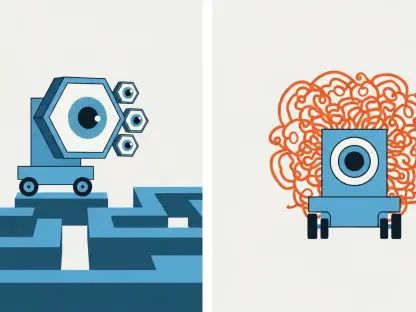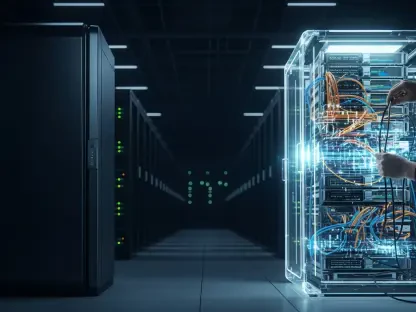Laurent Giraid is a recognized expert in the realm of Artificial Intelligence, with a keen focus on machine learning and ethical considerations tied to AI technologies. His insights into the intricate web of AI applications, particularly in video surveillance systems, offer valuable perspectives on navigating the complexity of legality, ethics, and technology in this sphere. As we discuss the multifaceted challenges of implementing AI in security systems, Laurent’s expertise guides us through the potential and pitfalls of leveraging this advanced technology for enhanced surveillance.
Can you explain the legal obstacles that organizations face when implementing AI in video surveillance systems?
Implementing AI in video surveillance is fraught with legal complexities. Different regions have varied regulations concerning what can be filmed and where. Beyond traditional video rules, AI capabilities like facial recognition introduce new concerns. A significant number of states have laws limiting facial recognition technology, while regulations on biometric data collection further complicate the legal landscape. Firms often need to delve deeply into local, state, and national laws, sometimes relying on legal counsel to avoid potential pitfalls. The lack of clarity in regulations often necessitates a conservative approach to ensure compliance.
What are the ethical dilemmas associated with using AI in video surveillance?
AI in video surveillance raises substantial ethical queries, primarily revolving around privacy and bias. While cameras have historically deterred crime, increased surveillance may make individuals uncomfortable. AI’s bias in training data aggravates these concerns; algorithms sometimes amplify societal prejudices, resulting in inequitable treatment. Even if no legal repercussions arise, the ethical and social implications demand attention. Addressing these dilemmas involves diligent model training that minimizes bias and monitorization to ensure that AI insights do not mislead.
How does AI’s accuracy affect its effectiveness in video surveillance?
AI’s accuracy is critical to its effectiveness in surveillance systems. Although some facial recognition algorithms boast high accuracy percentages, variability remains across different models. The precision of AI heavily depends on the breadth and variability of training data. Insufficient or skewed data can lead to inaccuracies like false positives. Using vast and diverse datasets, sometimes synthetic, can bolster precision, helping AI models more successfully identify people or objects of interest.
What are the data privacy risks associated with AI video surveillance?
Data privacy is a significant risk factor in AI video surveillance. This technology necessitates storing substantial amounts of video data, potentially creating extensive libraries that are prime targets for cybercriminals. Facial recognition data is particularly vulnerable, as stolen biometric data can be exploited for identity theft or fraud. For organizations, breaches can result not only in regulatory fines but in significant reputational harm. Robust encryption, limited data access, and advanced security measures like multi-factor authentication are vital in safeguarding against these vulnerabilities.
What are the cost-related challenges of implementing AI in video surveillance systems?
The costs associated with deploying AI-enhanced video surveillance are substantial. Building sophisticated AI models incurs high expenses, as does the integration of necessary IoT technologies to optimize the system’s functionality. While these investments promise long-term efficiency gains, the initial financial burden is often prohibitive for smaller enterprises. Open-source solutions could reduce these costs while partnering with specialized third-party services can help manage the associated technical intricacies without overwhelming resources.
Why is a thoughtful approach necessary when adopting AI in video surveillance?
Adopting AI in video surveillance requires a deliberate approach due to the myriad challenges involved. AI offers substantial benefits—enhanced real-time monitoring, alleviation of labor shortages, and improved investigation processes. However, each technological benefit brings with it legal, ethical, and operational considerations that must be meticulously addressed. Avoiding a rushed implementation aids in resolving possible issues beforehand, ensuring a cost-effective and compliant deployment that maximizes AI’s potential benefits while mitigating its inherent risks.
Do you have any advice for our readers?
AI in video surveillance offers powerful tools for enhancing security, but the journey is complex and fraught with challenges. My advice is to stay informed and cautious—understand the legal implications for your area, make ethical considerations a priority, and thoroughly explore the cybersecurity aspects of AI systems. Investing time upfront to explore open-source options and partnering with experienced service providers can also alleviate some financial burdens and technical complexities. Being proactive in addressing these factors can ensure a successful and responsible integration of AI technologies.









